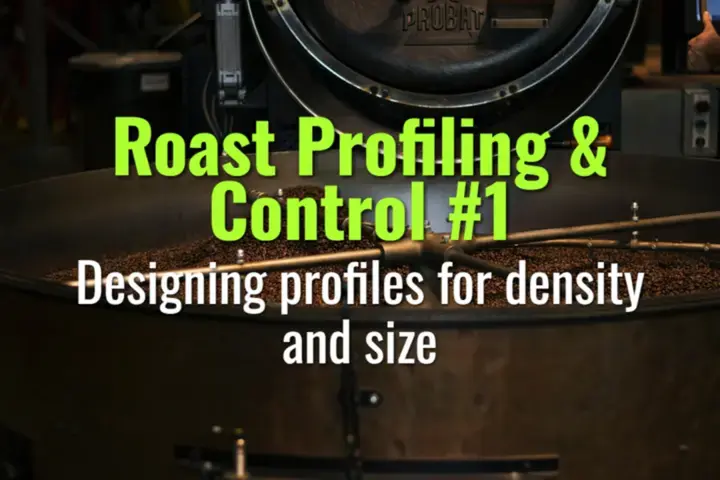Designing profiles for density and size
This topic covers how to create roasting profiles tailored to bean density and size, ensuring even roast and optimal flavor development.
- Coffee Basics Nerds
- 1 min read

Key Concepts
-
Bean Density:
-
Denser beans absorb heat more slowly, requiring longer ramp-up times.
-
Low-density beans heat faster and can scorch if roast curves are too aggressive.
-
Use a moisture and density test (e.g., float test, specific gravity) to categorize beans.
-
Bean Size:
-
Uniform bean size promotes consistent roasting.
-
Larger beans need slower initial heating to allow heat penetration.
-
Smaller beans benefit from slightly faster ramping to avoid underdevelopment.
-
Profile Design:
-
Adjust charge temperature and rate of rise (RoR) based on density and size.
-
Consider staggered airflow and drum speed adjustments to ensure even heat transfer.
-
Monitor first crack timing; denser beans may require extended drying and Maillard phases.
-
Segmentation:
-
Divide green coffee into density/size groups before roasting.
-
Roast each group separately or adjust profiles dynamically if using advanced software.
-
Practical Considerations:
-
Track historical roast data to refine profiles for specific lots.
-
Combine sensory evaluation with thermocouple data for profile optimization.
Summary
Designing roast profiles according to bean density and size allows for more uniform development, better flavor consistency, and reduced risk of under- or over-roasting. Careful measurement and segmentation, paired with dynamic profile adjustments, are essential tools for precision roasting.
You might also like:
- Tags:
- Green Coffee
- Key Concepts
- Heat Transfer
- Roast Profiles
- Drum Speed
- Charge Temperature
- Sensory Evaluation
- Rate Rise
- Practical Considerations
- Flavor Consistency
- Rise Ror
- Airflow Drum
- Reduced Risk
- Bean Size
- Denser Beans
- Bean Density
- Low Density
- Better Flavor
- Roast Curves
- Smaller Beans
- Crack Timing
- Adjust Profiles
- Heat Faster
- Consistent Roasting
- Specific Lots
- Larger Beans